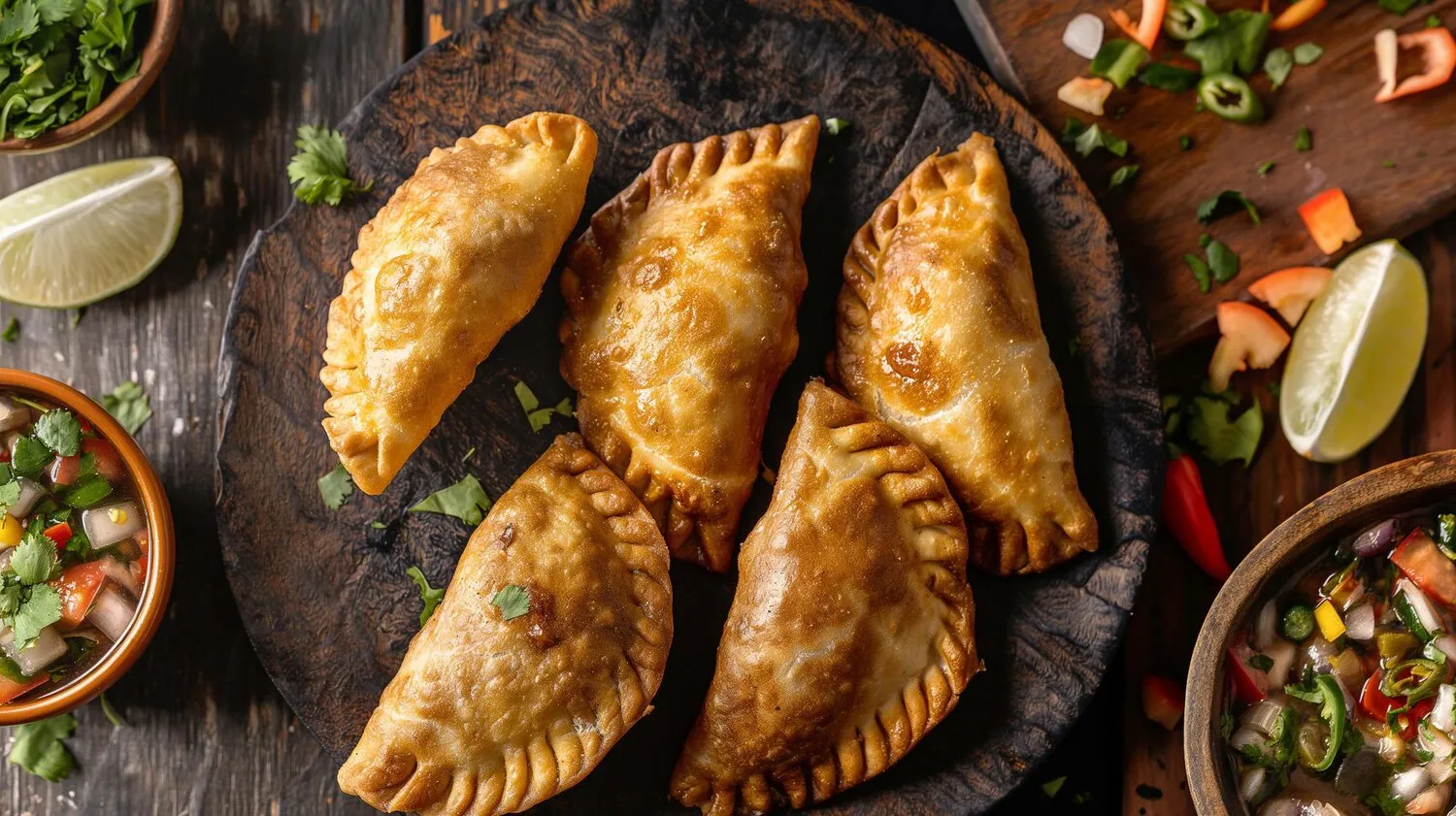
Cachapas
Venezuelan-style corn pancake.
Nutrition Facts
* The % Daily Value (DV) tells you how much a nutrient in a serving of food contributes to a daily diet. 2,000 calories a day is used for general nutrition advice.
La Ecológica
Cachapas are believed to have originated in the central region of Venezuela, particularly in the state of Miranda. Their history is deeply intertwined with the indigenous peoples of the area, who cultivated corn as a staple crop long before the arrival of the Spanish. The dish represents a fusion of indigenous culinary traditions and, to a lesser extent, Spanish influences.
Cachapas hold a significant place in Venezuelan culture, often enjoyed as a breakfast food, a quick lunch, or a late-night snack. They are a common sight at roadside stands, markets, and family gatherings, representing a comforting and accessible part of Venezuelan culinary heritage.
Roadside Staple
Cachapas are a popular street food, often sold from roadside stands and food trucks across Venezuela. Stopping for cachapas is a common practice during road trips and weekend excursions.
Family Gatherings
Cachapas are frequently served at family gatherings and celebrations, symbolizing togetherness and a shared cultural identity.
National Dish Association
Although not officially declared a national dish, cachapas are widely considered one of Venezuela's most emblematic foods, deeply ingrained in the country's culinary traditions.
Cachapas offer a delightful blend of sweet and savory flavors, primarily dominated by the sweetness of fresh corn. The addition of cheese, typically queso de mano or telita, introduces a salty and tangy counterpoint.
The dominant flavor is the natural sweetness of fresh corn kernels, which are ground into a batter. This sweetness is balanced by the salty and slightly acidic flavor of the cheese, often queso de mano (a soft, fresh cheese) or queso telita (a stringy, mozzarella-like cheese). The cachapas can also be enhanced with a touch of butter or margarine during cooking, adding richness and a subtle buttery flavor. Some variations include a savory filling of shredded pork (pernil) or chicken, adding another layer of complexity.
Corn Selection
Use fresh, sweet corn for the best flavor. Look for ears that are plump and have kernels that are milky when punctured. Frozen corn can be used as a substitute, but fresh is always preferred.
Griddle Temperature
Cook the cachapas on a medium-low griddle to ensure they cook through without burning. A too-high heat will result in a burnt exterior and an undercooked interior.
Cheese Quality
Use high-quality queso de mano or queso telita for the most authentic flavor. These cheeses have a unique texture and slightly salty taste that complements the sweetness of the corn.
Resting the Batter
Allowing the batter to rest for about 15-20 minutes before cooking helps the cornmeal to hydrate, resulting in a smoother and more tender cachapa.
Explore additional Venezuelan dishes and restaurants
Explore VenezuelanDiscover top dining spots and culinary experiences in Santa Cruz de Tenerife.
Explore Santa Cruz de TenerifeLearn more about the food culture, restaurant scene, and culinary heritage of Spain.
Explore Spain